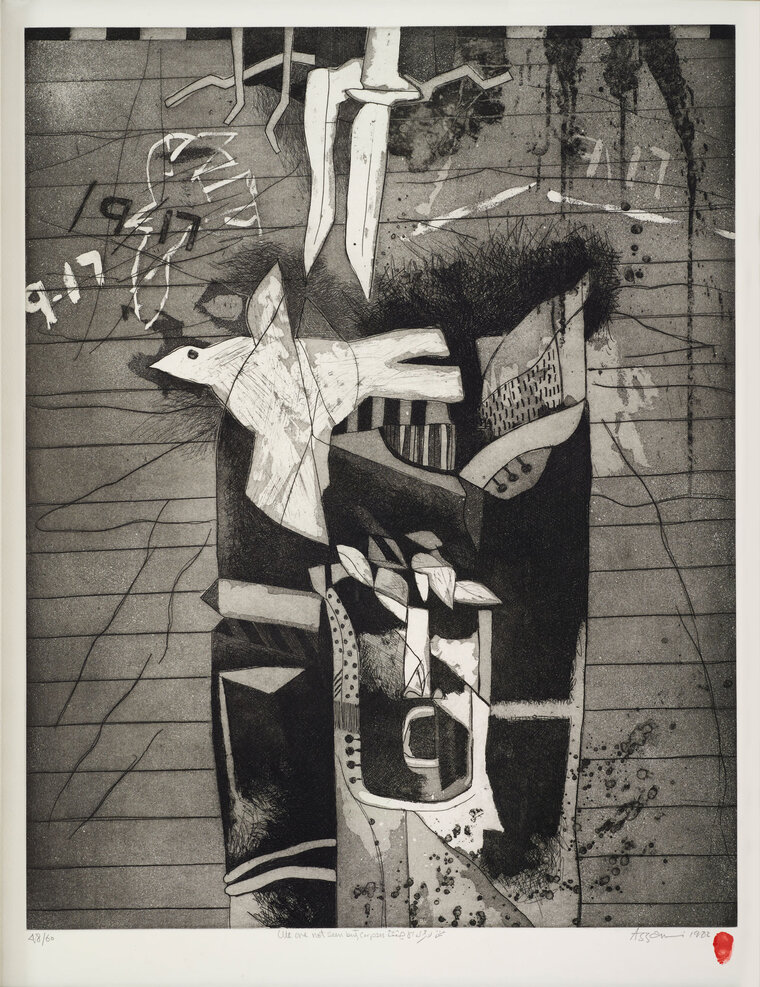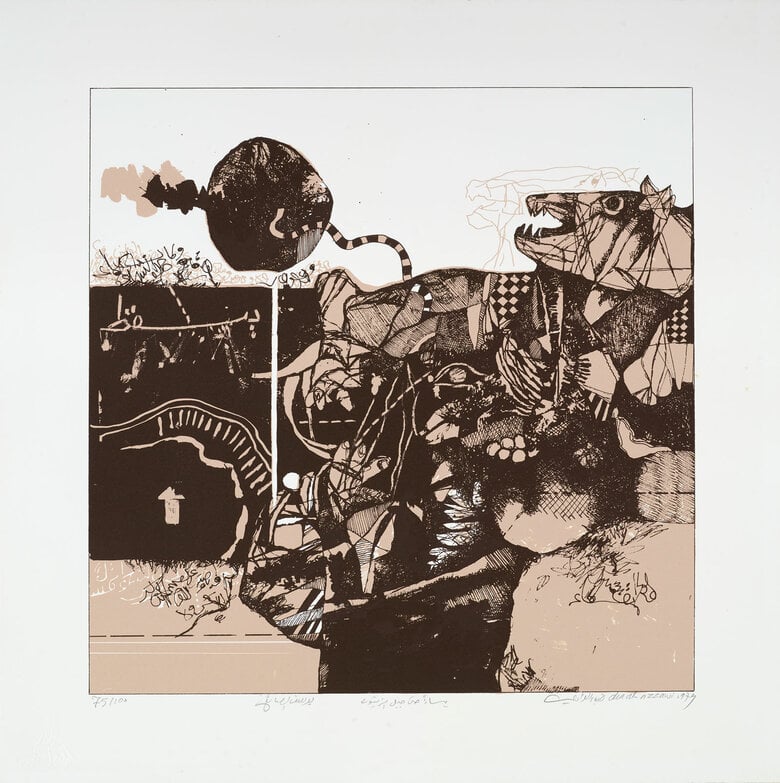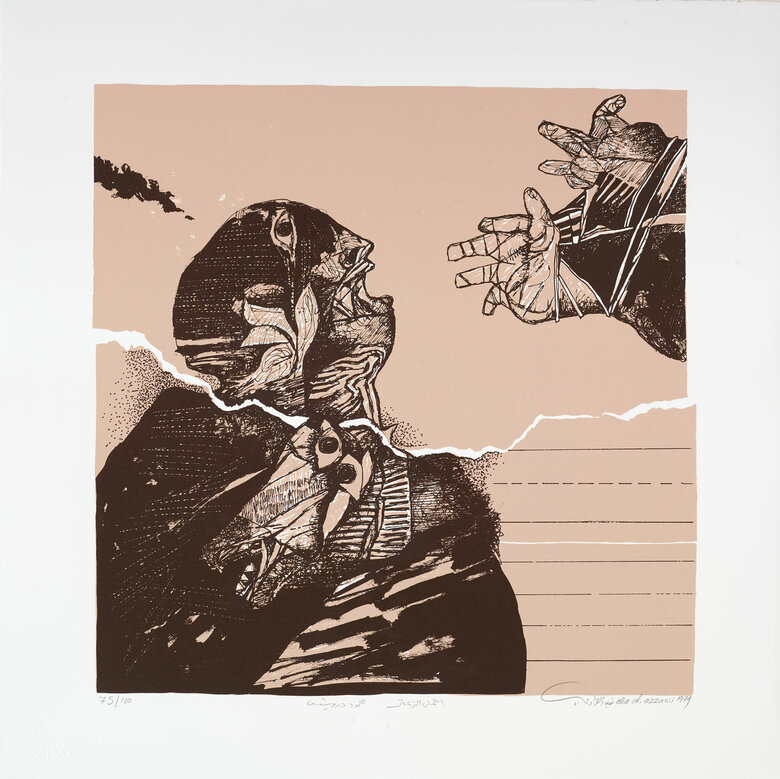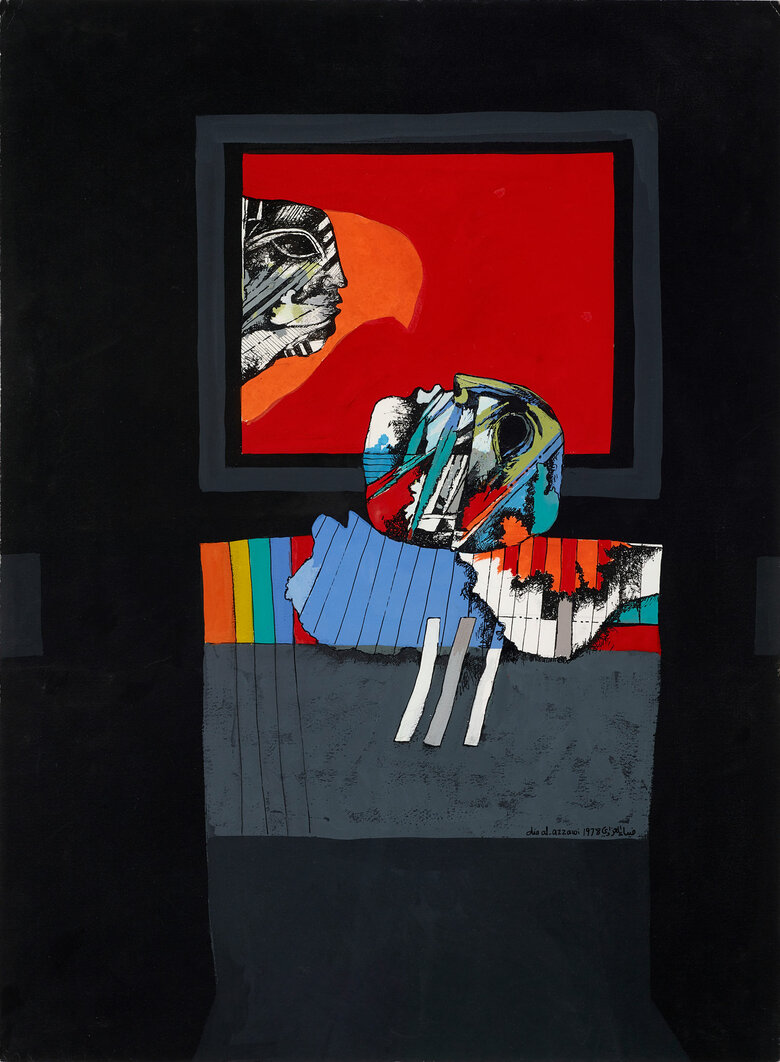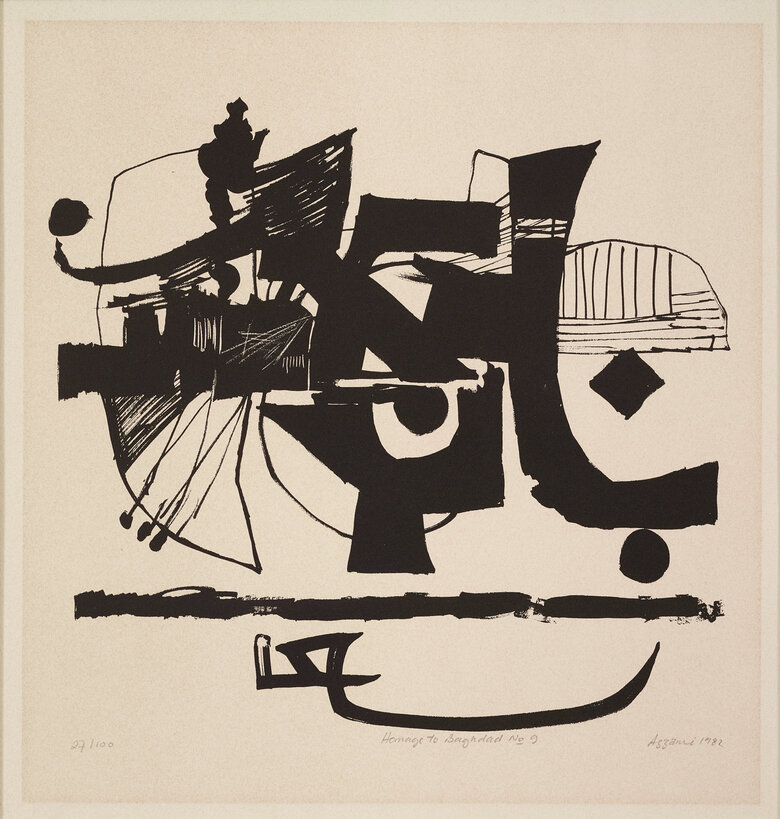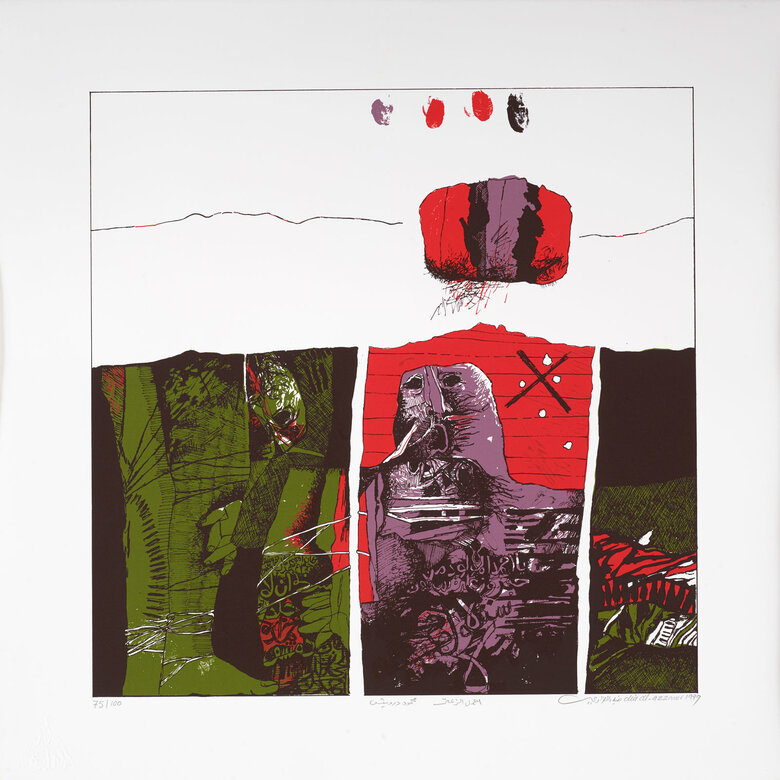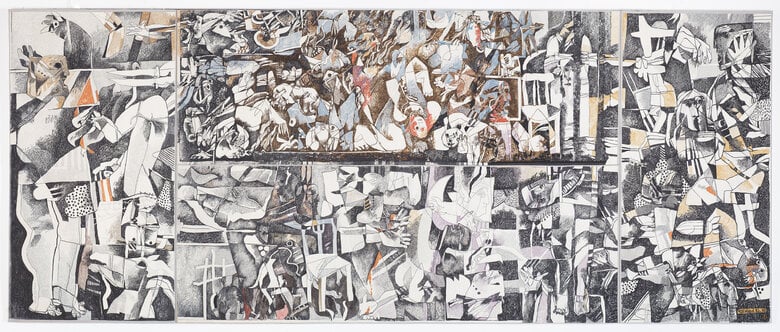We Are Not Seen but Corpse, 1983, is a harrowing testimonial to the 1982 massacre of Palestinian refugees and Lebanese civilians living in Sabra and Shatila refugee camps in Beirut The prints feature stark, two-dimensional compositions rendered in solid black lines and grey tones, depicting heaps of rubble and fragmented body forms, with limbs, feet, hands, gun barrel orifices, piles of window frames, chairs, and debris, which emerge from each other like an organism.
To depict the scene, Al Azzawi deploys Intaglio printmaking techniques such as etching and aquatint to create intricate linework and tonal variations. The sketched and etched visual marks give a feeling of motion to suggest ongoing brutalization: long drawn-out faces have their mouths open in a silent scream as their dismembered bodies are jerked unnaturally; textured dots and stripes situate the pointing arrows, aimed knives, and 'x' signs, indexing their targets for destruction. Aquatint, on the other hand, adds tonal variations. The artist-printmaker coats the plate with powdered rosin (resin) particles that create areas of varying depth. The rosin is acid resistant and typically adhered to the plate by controlled heating, where the dispersed rosin grains will print white, leaving the acid-bitten scattered areas around in toned blacks. This technique enhances the prints' spatial atmosphere, suggesting a surreal, gravity-defying world where shapes and debris float in a haunting grayscale, evoking a perpetual nightmare. The droplet patterns of resin in the aquatint technique resemble splattered blood from senseless violence.
Al Azzawi's artistic focus shifted toward political themes after co-founding the 'New Vision Group' along with Iraqi artists Ismail Fatah, Rafaa Al Nasiri, Hashem Samarji, and Saleh al Jumaie. The group released their Manifesto: Towards a New Vision in collaboration with Iraqi poets, in 1969, arguing that art should be stylistically free; artists should challenge rigid cultural heritage and recreate it, engaging with contemporary social and political realities. New Vision proposed art as a site for speaking the truth in conditions of untruth. Azzawi opposed the oppressive Baathist regime and advocated Arab nationalism, supporting the Palestinian cause.
The New Vision group encouraged the adoption of innovative media and methods, including printmaking, graphic arts, and the artist poster, and its unity around radical political and intellectual movements, especially pan-Arab politics. Then, Al Azzawi became interested in the reproducibility of books, posters, and printmaking as part of articulating the Arab ideals and Palestinian cause. Many pieces in the We Are Not Seen But Corpses series include horizontal etched lines, like those of a notebook known as (daftar) in Arabic; however, none here have words or poems written on them. Words are no longer appropriate; only visual elements that depict silent screams remain, and the frozen mark of the date and location: 16/09/82, Sabra. Al Azzawi signs each piece with a red fingerprint, identifying himself with Palestinian suffering and Arab bloodshed. The Sabra and Shatila Society in London published the nine prints in this edition. They were printed in several editions to support survivors and shed light on the atrocity.
Signed, thumb stamped and dated in English front lower left,titled in Arabic and English front lower middle, with edition 48/60 front lower right. Series of 9 works/ Massacre of Sabra &Chatila camps

